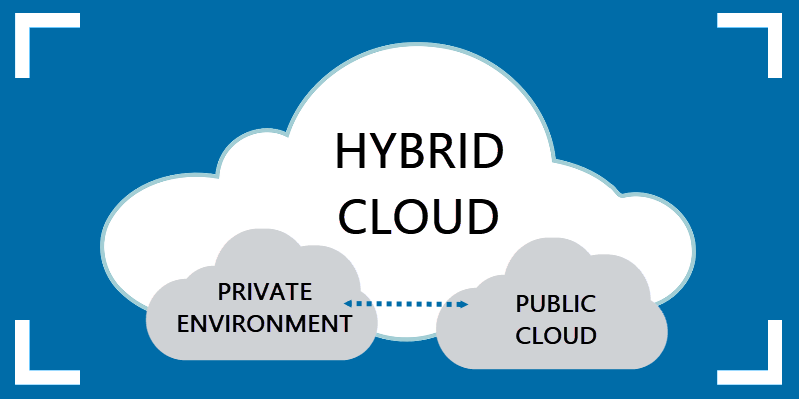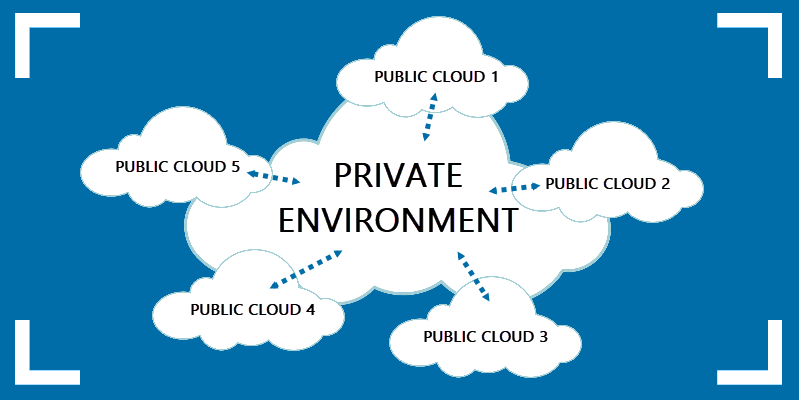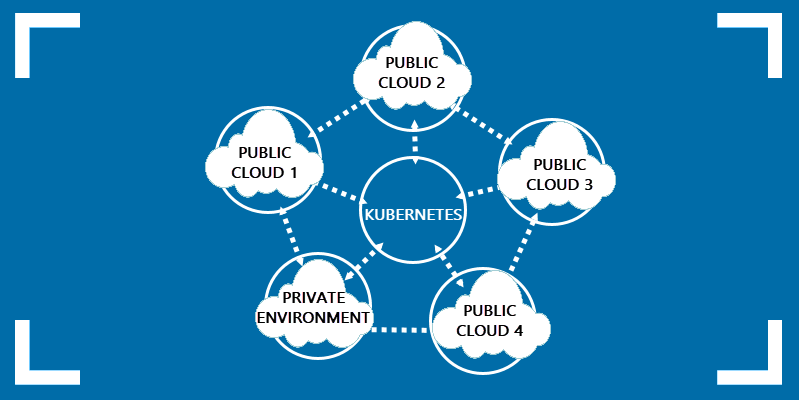Introduction
Hybrid and multi-cloud strategies became popular due to their competitive advantages, such as lack of vendor lock-in, better app performance, flexibility, and disaster mitigation. However, the ecosystems comprising of different cloud providers tend to be complex and challenging to manage.
This article introduces Kubernetes as an effective way to achieve application portability by making your hybrid or multi-cloud ecosystem simpler to configure and maintain.

Hybrid Cloud vs Multi-Cloud
Each enterprise-specific set of workloads, infrastructure, and processes requires a different tailor-made strategy that responds to its needs. Given this lack of uniformity, it is often difficult to talk about clear-cut definitions of multi-cloud and hybrid cloud solutions. However, we can make the following broad distinction.
A hybrid cloud environment consists of workloads deployed across more than one computing environment, with at least one private environment and one public cloud.

With multi-cloud, a company relies on multiple public-cloud offers instead of using a single vendor. Each of the clouds is then used to fulfill a specific function. For example:
- One can provide a separate environment for development and testing.
- Another can store highly sensitive, proprietary, or classified data.
- While a third provides the same quality of service everywhere, regardless of the region, etc.

Note: For more details on similarities and differences between hybrid and multi-cloud environments, check out Multi Cloud vs Hybrid Cloud: A Definite Comparison.
Kubernetes in Hybrid and Multi-Cloud Environment
The main problem with using various environments for application development is that those environments usually run on different operating systems and have system-specific dependencies.
An earlier approach to solving this problem was creating isolated projects with isolated configurations and requirements and managing them independently. While predicting performance and workload at a small scale may be a manageable task, it is downright impossible to keep up with it at a larger scale. This unpredictability is why updating applications and operating systems in this scenario tends to be error-prone.
Kubernetes offers a solution to these problems with its environment-agnostic approach. As a portable, extensible, and feature-rich platform, Kubernetes facilitates configuration and automation, helping manage workloads and migration between clouds.

Benefits of using Kubernetes with Hybrid and Multi-Cloud
Kubernetes is based on concepts that support portability, making it a good choice for hybrid and multi-cloud computing environments. Some of these concepts are:
- Service - A service is an abstraction designed to expose an application (running on a set of pods or containers) and provide a policy to access it, creating a microservice. This abstraction allows for seamless replacement, scaling, or restarting pods whenever a need arises, without affecting the entire environment.
- Ingress - An API object managing external access to services by exposing HTTP and HTTPS routes to services in the cluster. Ingress gives services URLs that are accessed externally.
- Ingress controller - A controller that enables the Ingress function by implementing routing rules. It is most commonly configured using a load balancer.
- Volume - Kubernetes volume abstraction allows for easier storage mechanics management. Volumes preserve data on container restarts and make data available for all containers in a pod.
- Config map and secret - These concepts facilitate storing configuration and sensitive information across the cluster.
Another advantage of utilizing Kubernetes in hybrid and multi-cloud is that it enables easier scaling. Managing isolated projects in data centers is difficult, especially in the multi-cloud environment.
Kubernetes’ built-in fault tolerance and auto-healing make it possible to scale resources up and down with ease. It enables you to fully leverage automated cloud solutions such as Bare Metal Cloud, which supports on-demand resource scaling.
Kubernetes is designed to standardize many aspects of application definition and deployment, as well as the operational model. This makes it easier for developers to standardize their software development life cycle.
Control your cloud costs! CloudAdmin tools let you monitor all your cloud costs and identify areas for optimization. Sign Up Here!
Kubernetes Limitations in Hybrid and Multi-Cloud
There are a couple of points you need to consider before implementing Kubernetes in a hybrid and multi-cloud environment:
- Choosing multiple providers to avoid vendor lock-in is one of the often-quoted benefits of the multi-cloud approach. However, if you decide to implement Kubernetes in this environment, be aware that you are creating another lock-in, this time with Kubernetes itself.
- With Kubernetes, you need to containerize your apps. Containerization may not be the best way forward in some scenarios, such as with legacy applications or applications with hard dependency on specific hardware architectures.
- Every cloud provider offers native services, including optimizations and assistance with storage management. Employing Kubernetes to make your environment provider-agnostic also means giving up on all the benefits offered by the provider.
- Even though Kubernetes goes a long way in automating processes, you still need to manage your infrastructure and face infrastructural dependencies.
The factors listed above highlight the importance of performing a thorough analysis before adopting Kubernetes in the multi-cloud.
How to Efficiently Manage Kubernetes in Hybrid and Multi-Cloud
If you decided that Kubernetes is a good choice for your hybrid and multi-cloud environment, here are some tips on making the most of this ecosystem.
Plan Your Cluster Configuration
The two most common configuration scenarios are a single cluster with distributed nodes or multiple clusters for each cloud. If you opt for the single cluster scenario, inspect the communication between nodes on different clouds to make sure nods are properly configured.
Standardize Your Clusters
While Kubernetes helps with standardization efforts, multi-cloud deployments tend to be the most difficult to standardize, with differences between providers often causing issues. Avoid cloud-specific containers, even though it is easier to optimize them to work in a particular environment. Instead, use vendor-agnostic options for best standardization results.
Note: Refer to our guide Kubernetes Best Practices to learn how to manage efficient clusters.
Use Third Party Automation Tools
Kubernetes is a great automation tool, but multi-cloud automation requires a more advanced skill set. If you possess the expertise, this does not present a problem. If you do not, consider third-party automation tools.
Use Infrastructure That Fits Your Needs
Adding an abstraction layer to compensate for differences in cloud vendors should be the last resort for managing a multi-cloud environment. A better solution is to analyze your needs and choose services that provide native support for your use case.
Note: Cloud-native solutions like Bare Metal Cloud are optimized for multi-cloud infrastructure and help overcome potential infrastructural issues.
Implement a Service Mesh
Use a service mesh to automate responses to security issues. With real-time monitoring and automatic responses, a service mesh makes it easier to manage cluster communication and control the deployment.
Self-Manage Kubernetes Versions
Kubernetes as a Service (KaaS), offered by a cloud provider, manages your environment by updating and upgrading the system. However, this provides little control when it comes to compatibility. This lack of control is why it is often a better idea to self-manage the deployment.
Conclusion
This article provided you with information on what to expect if you decide to adopt Kubernetes as a way to manage a hybrid and multi-cloud application deployment.
While it requires careful planning and finding a way around its drawbacks, the independence, efficiency in resource usage, and elasticity Kubernetes provides are enough to make it a logical choice for hybrid and multi-cloud environments.